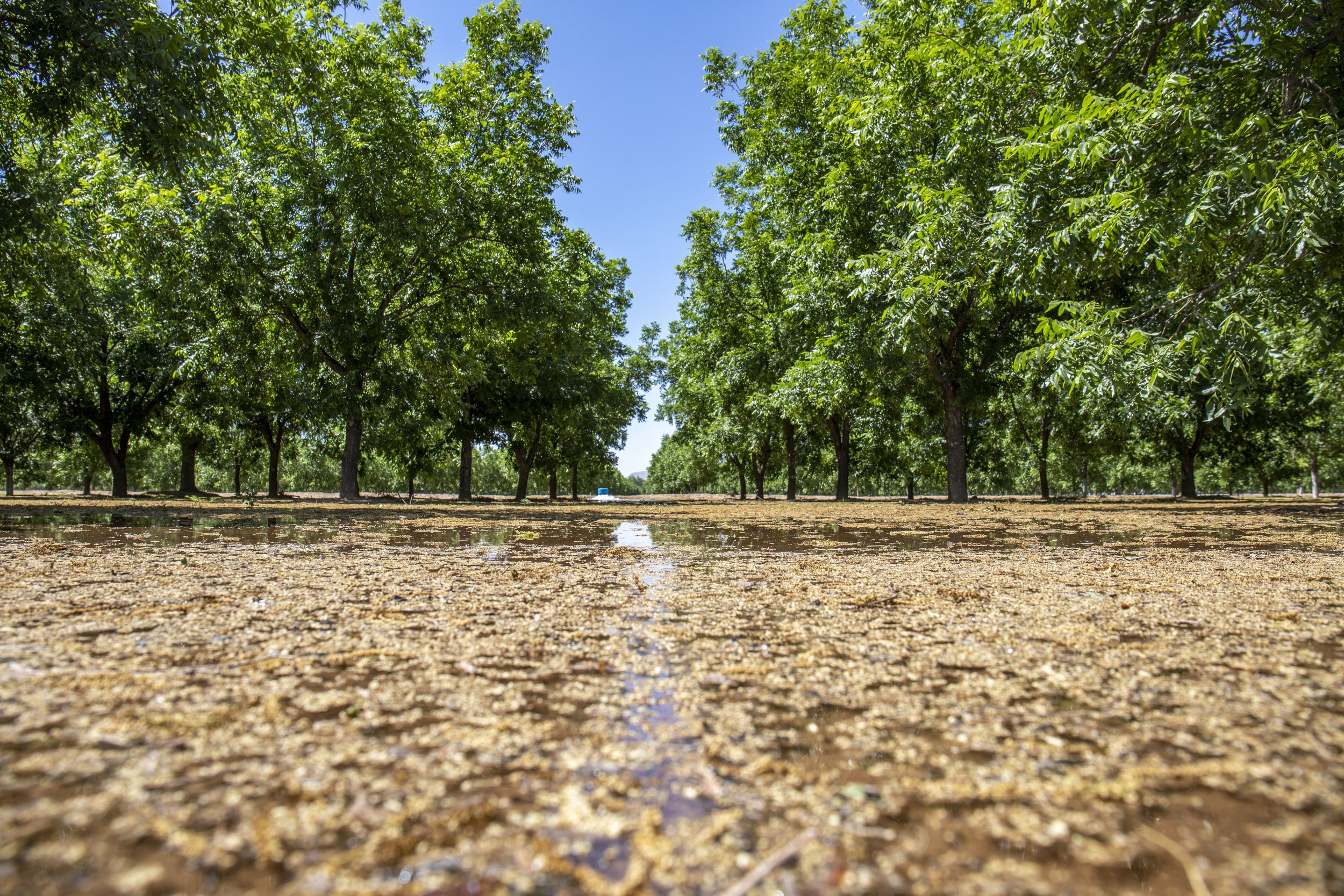Part Ten: Salted earth at the tail of the Rio Grande’s snowmelt
Dwindling flows and growing salination threaten crops and soil in Texas
EL PASO, Texas —Rio Grande water released from Caballo Dam on June 1, 2022. The water travels downstream for several days to reach the riverbed running through El Paso, Texas. Releases used to come in March or April, but with less water flowing downstream, managers now wait until nearly the middle of the growing season. (Photo by Diana Cervantes for Source NM)
Irrigation water sinks into pecan groves on the Texas-New Mexico border. Farmers in the region have been relying on groundwater pumping to keep crops alive as irrigation water has become increasingly unreliable. (Photo by Diana Cervantes for Source NM)
The Vinton stretch of the Rio Grande just north of El Paso at Vinton Road and Doniphan Drive on May 23, 2022. The river below Elephant Butte Reservoir in Southern New Mexico through Far West Texas is dry most months of the year, only running during irrigation season. (Photo by Diana Cervantes for Source NM)
White-throated swifts carry insects to feed their young, nestled against the bottom of bridges along the Rio Grande. (Photo by Diana Cervantes for Source NM)



